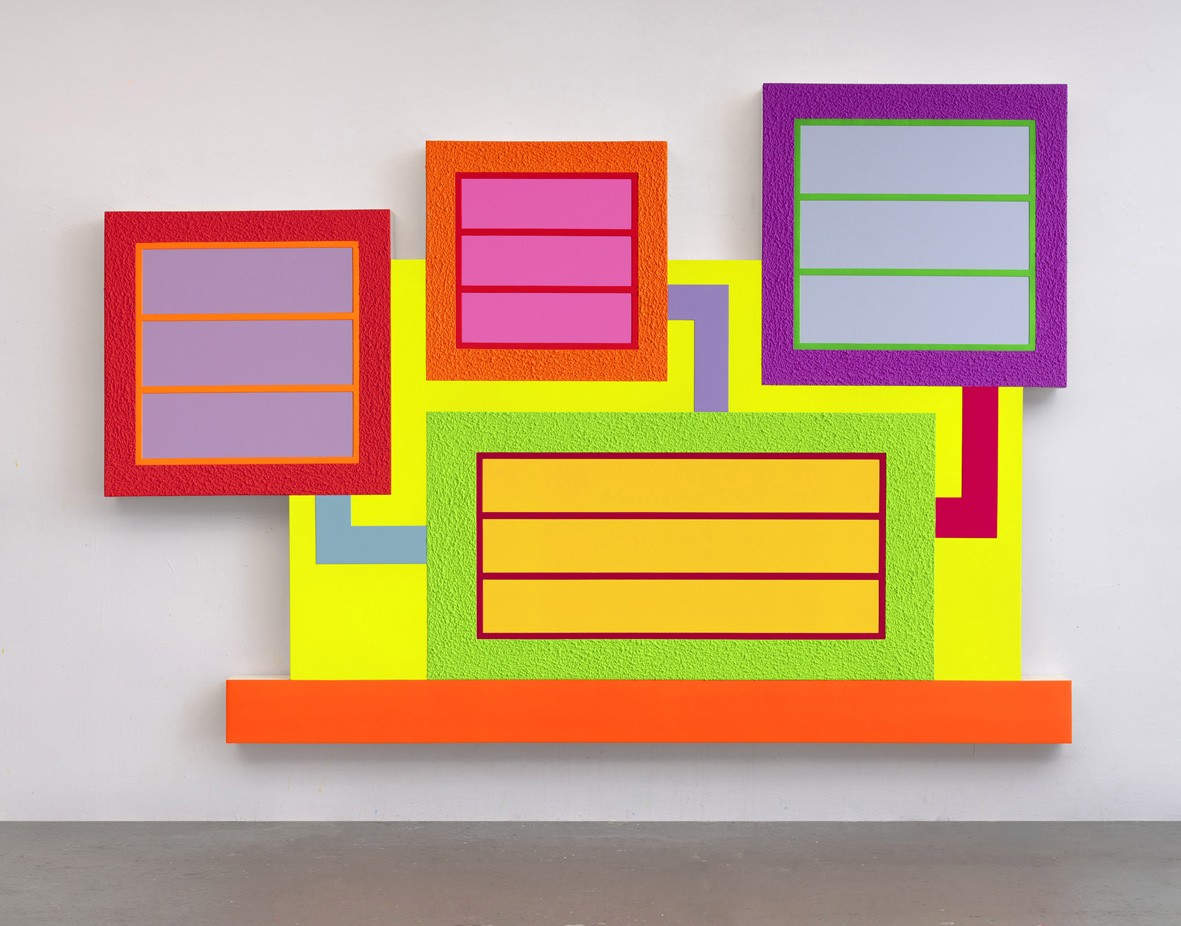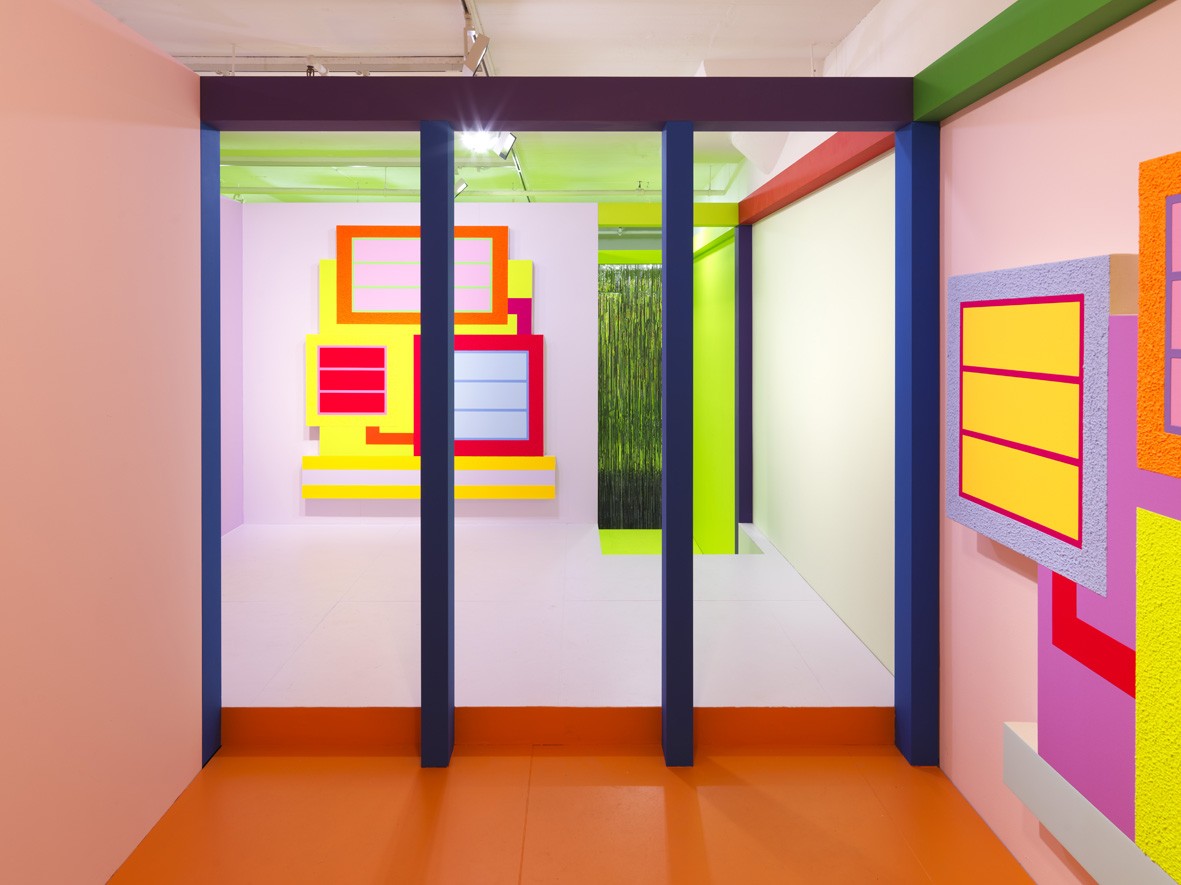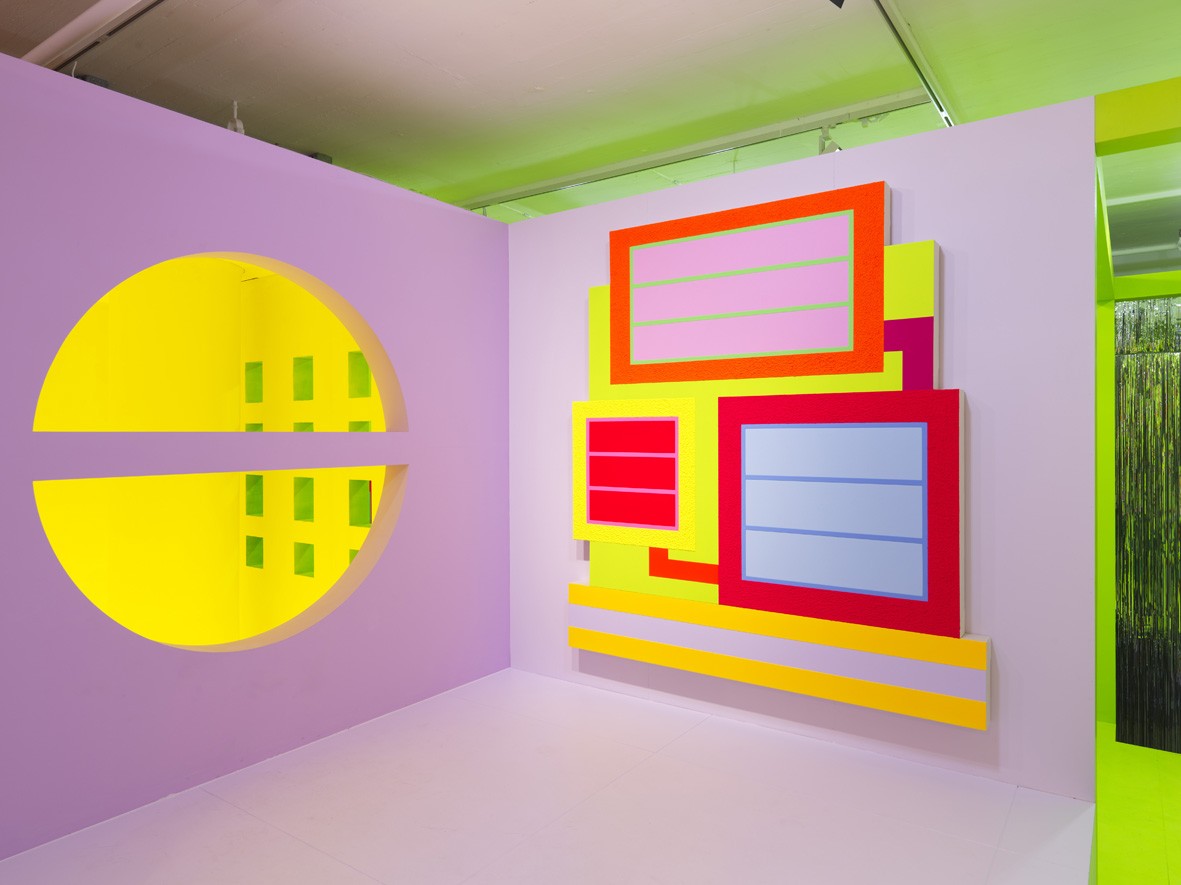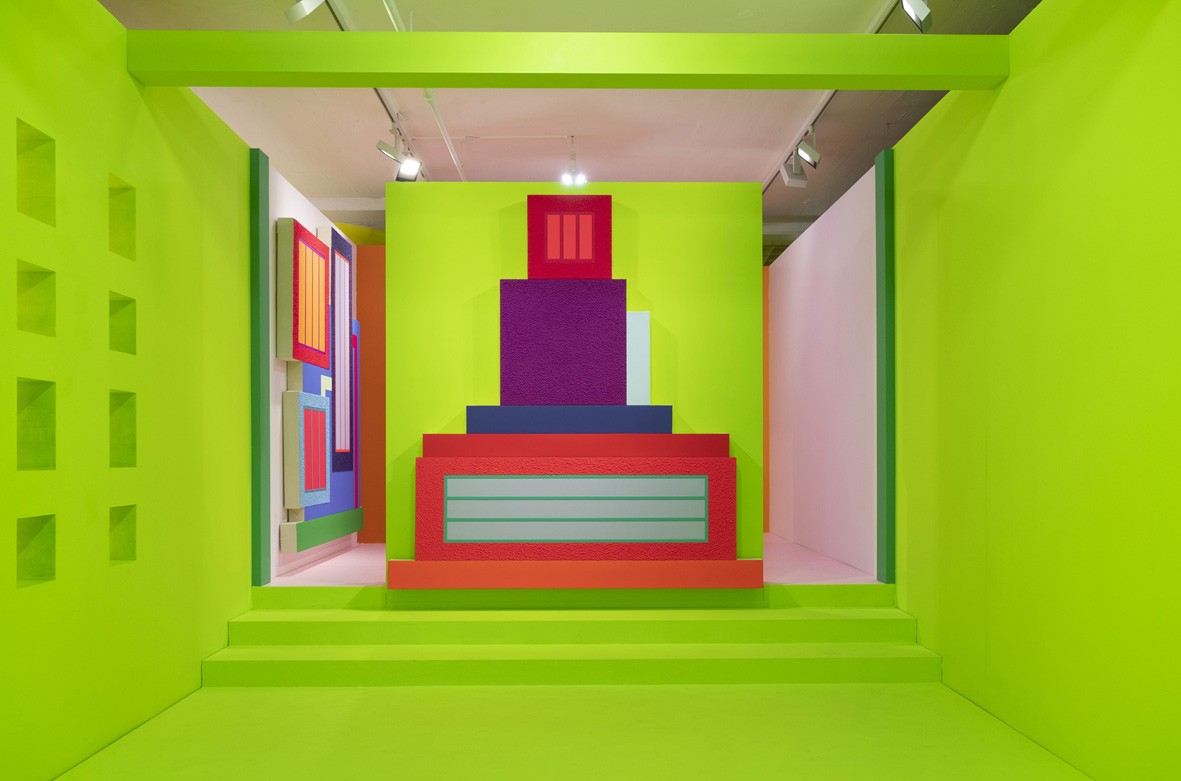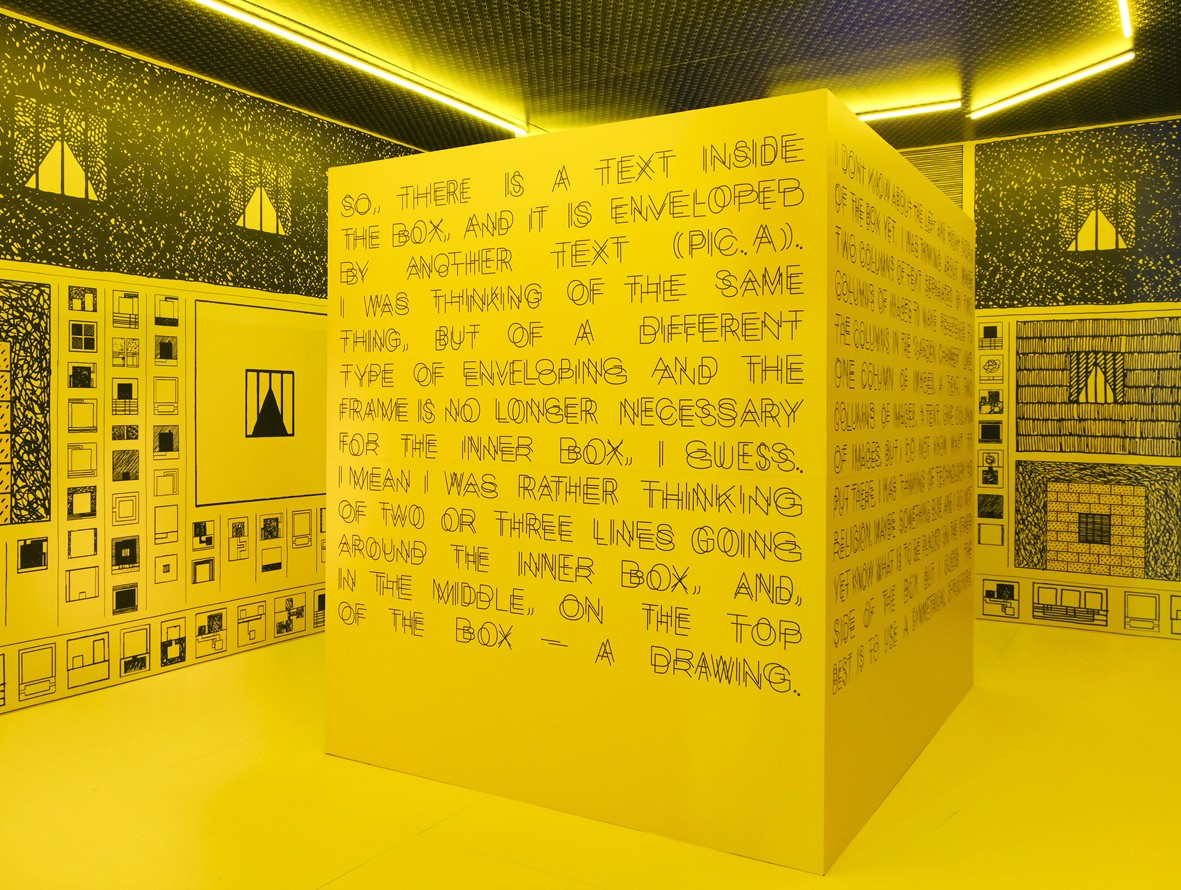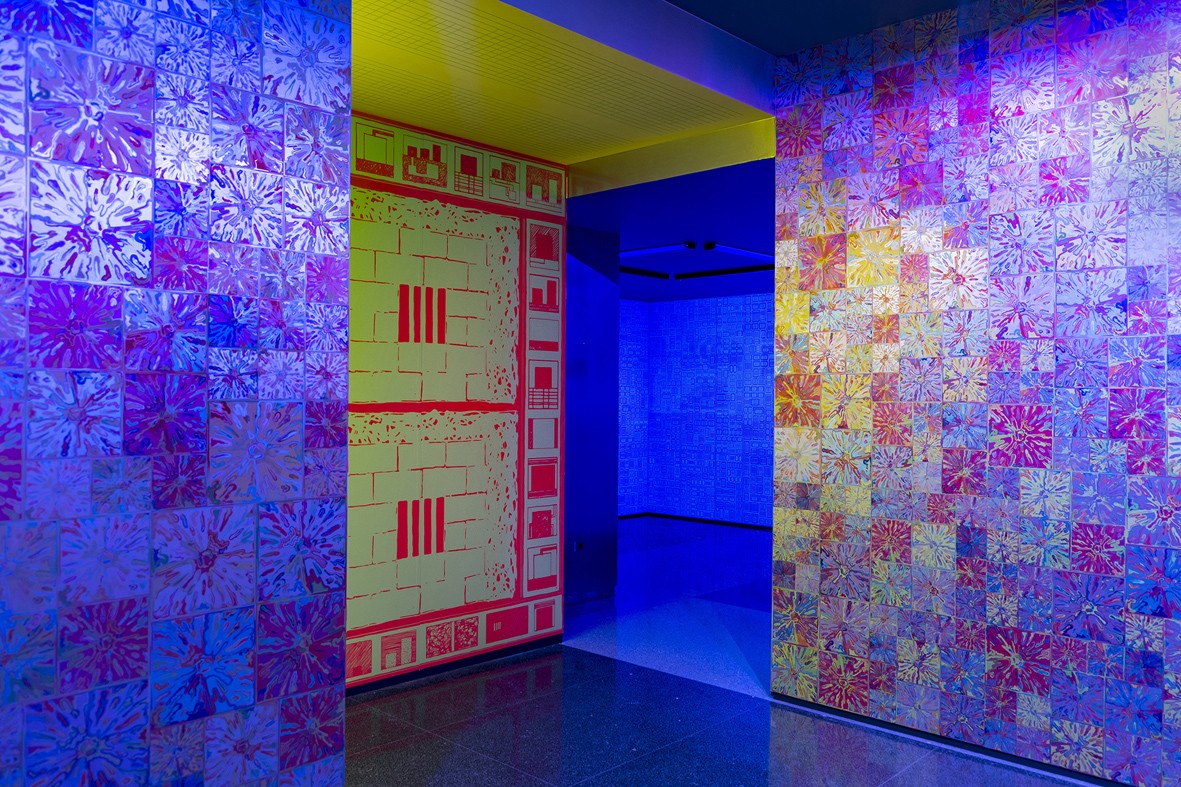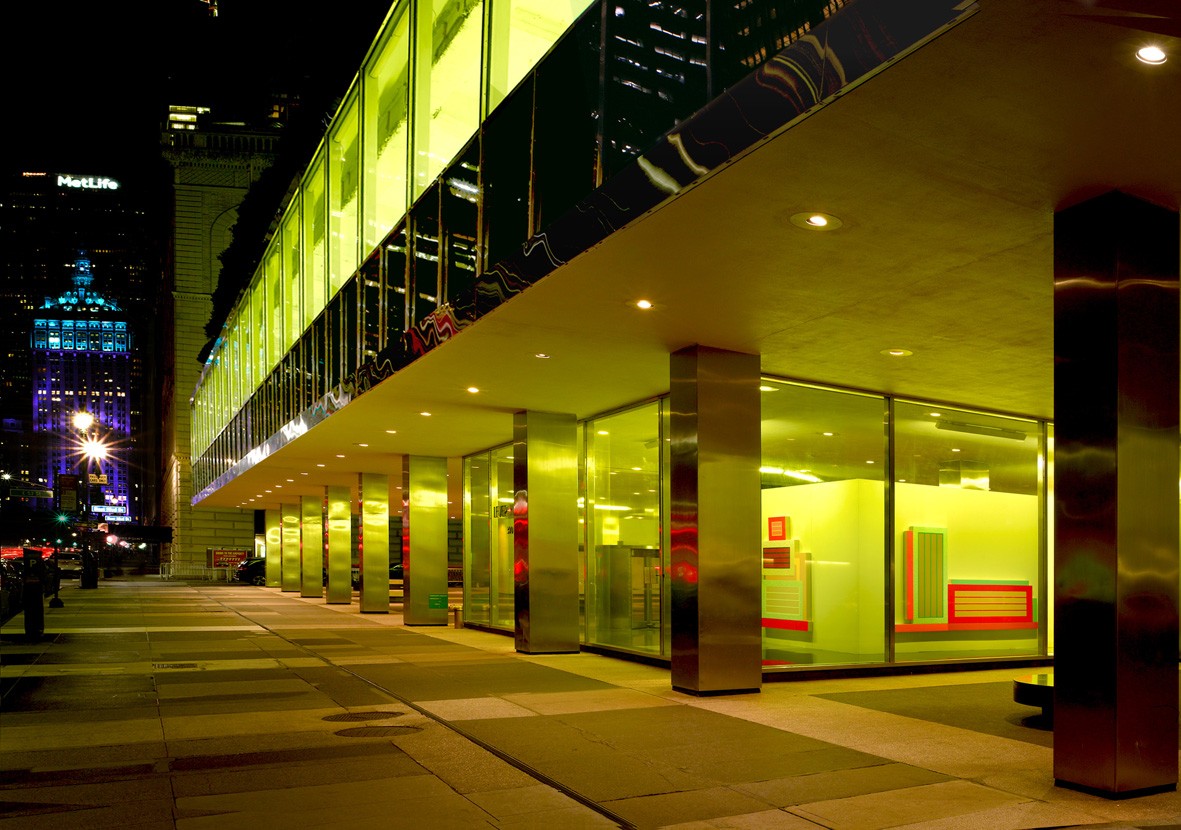ART-PRESENTATION: Peter Halley-Anthesteria
 Peter Halley is a contemporary painter, writer, teacher and critic, and is largely recognized for his significant contributions to the Neo-Conceptualist movement of the 1980s and namely his near florescent, geometrically structured paintings. Peter Halley founded and directed, with Bob Nickas, Index Magazine, an iconic magazine of indie culture, published from 1996 to 2005. He served as the Director of Graduate Studies in Painting and Printmaking at the Yale University School of Art from 2002 to 2011.
Peter Halley is a contemporary painter, writer, teacher and critic, and is largely recognized for his significant contributions to the Neo-Conceptualist movement of the 1980s and namely his near florescent, geometrically structured paintings. Peter Halley founded and directed, with Bob Nickas, Index Magazine, an iconic magazine of indie culture, published from 1996 to 2005. He served as the Director of Graduate Studies in Painting and Printmaking at the Yale University School of Art from 2002 to 2011.
By Efi Michalarou
Photo: Museo Nivola Archive
Through the digitally generated mural “ANTESTERIA”, Peter Halley will completely transform the walls of the Museo Nivola temporary exhibition space. The Greek title “ANTESTERIA”, references the several Athenian festival honoring Dionysus, the wine god, held annually for three days in the month of Anthesterion (February–March) to celebrate the beginning of spring and the maturing of the wine stored at the previous vintage. On the first day libations were offered to Dionysus from the newly opened casks. The second day was a time of popular merrymaking typified by wine-drinking contests in which even slaves and children participated; but the state performed a secret ceremony in a sanctuary of Dionysus in the Lenaeum, in which the wife of the king archon went through a ceremony of marriage to Dionysus. On these days, it was believed, the souls of the dead came up from the underworld and walked abroad; people chewed leaves of whitethorn and smeared their doors with tar to protect themselves from evil. The third day (was a festival of the dead, for which, apparently, pots of seed or bran were offered to the dead. Peter Halley is known for his geometric painting alluding to late capitalism’s social spaces and their dimensions of confinement, isolation, and surveillance. “Cells,” “prisons,” and “conduits” are the recurring motifs in his work since the 1980s, they relate to the angular structures of corporate skyscrapers, as well as to computer microchips, electrical circuits, and the internet’s infinite connections. In many ways, Halley’s work is a direct response to and comment on the art that preceded him, and the cultural climate of the late 1970s and 80s. Many minimalists of the time, such as Donald Judd, Sol LeWitt, and Mel Bochner, used mathematical and rational systems to ground art in the objective facts of experience. Yet another group of artists rising to prominence in the 1980s, including Julian Schnabel and Enzo Cucchi, wanted a return to the art of painting as a self-expressive and subjective vehicle for meaning. Partially influenced by the theoretical writings of Robert Smithson and Michel Foucault, Halley’s work responds to both these sensibilities, presenting subjectivity as completely bound up with and regulated by systems. Mural installations took on greater importance for Halley starting in 2018, with the project for Lever House in New York. In this two-floor immersive installation, Halley uses the circuit-like compositions of his paintings as inspiration for the lobby’s layout, inviting viewers to feel as if they are walking through the space created by one of his paintings. Yellow window film on the exterior windows and yellow- tinted ceiling lighting created an artificial, irradiated presence. Then with “Heterotopia I” at the Venice Biennale in 2019, where sing the forty-meter-long exhibition space, Halley has assembled a sequence of eight interconnected rooms that employ digitally-printed wall murals, a varying palette of artificial lighting, and three-dimensional objects to create a hermetic, coded heterotopia – a term borrowed from Michel Foucault, who defined heterotopia as a differentiated, bordered space created for a special purpose that both mirrors and defines itself as separate from everyday spaces and “Heterotopia “I” at Greene Naftali gallery in New York the same year which embodied the relationship between painting and architectural space, brought visitors into a disorienting, hyperreal world collaged out of references to science fiction, modernist architecture, and mass media, all painted in fluorescent hues. The installation was both a fortress and a stage set and brought to mind the importance of creating alternative worlds and ways of seeing while also probing the ties between architecture, art, and image.
Info: Museo Nivola, Via Gonare no. 2, Orani NU, Italy, Duration: 1/5-22/8/2022, www.museonivola.it
